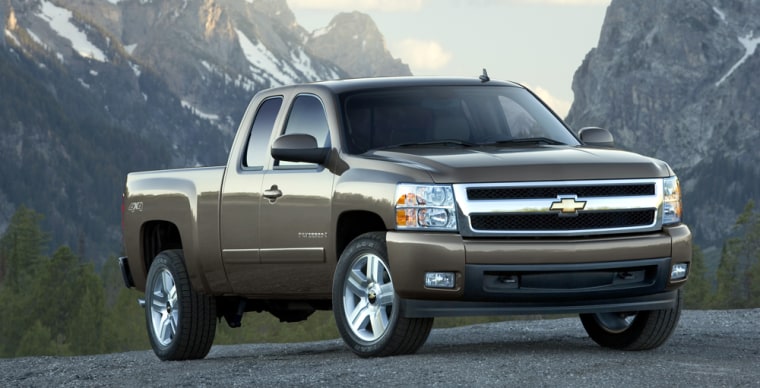Faced with declining vehicle sales and escalating costs, the Big Three U.S. automakers are racing to restructure their flagging businesses, and General Motors is emerging as the front-runner, analysts say.
Evidence of this came Wednesday when GM reported a much narrower quarterly earnings loss of $115 million for the third quarter, compared with $1.7 billion a year earlier. The world's biggest automaker is beginning to reap the benefits of a turnaround plan that includes massive job cuts and plant closures.
By contrast Ford, which is just beginning its restructuring, lost an astounding $5.8 billion. Chrysler, the U.S. unit of Germany's DaimlerChrysler, reported a $1.5 billion operating loss.
If the Big Three were running a 26-mile marathon, GM would be near Mile 20, said Rebecca Lindland, an auto analyst at Global Insight.
“Right now, GM is really gaining ground, while the other two are falling behind,” Lindland said. “GM has been exercising a tremendous amount of financial discipline and so is in good shape for 2007. That doesn’t mean they will start showing profitability right away, but they are doing great when you compare them with a company like Ford, which in this race is only just leaving the starting line.”
The U.S. automotive industry is facing one of its most challenging periods in decades, with the Big Three losing share to tough overseas rivals led by Toyota.
So far GM is the only one that can be described as in turnaround mode, said Robert Toomey, chief equities strategist at E.K. Riley Advisors in Seattle, who has a “buy” rating on GM’s shares.
“[Third-quarter] earnings came in much better than expected, and core automotive operations were great,” he told CNBC. “So we are definitely seeing some improvement. They are further along in their restructuring and product development [than Ford and Chrysler] and have a much larger market share.”
For Ford, the quarterly loss was the biggest in more than 14 years. And more pain looks likely. As its market share drops and Ford pays for further plant closures and restructuring costs, more losses in future quarters are likely, Ford’s new CEO Alan Mulally said in an interview on CNBC.
Good product mix is key for future success at the Big Three, said Lindland. Both Ford and GM produce about 60 percent of their vehicles as trucks and about 40 percent as sedans, while Japan's Toyota does the reverse — 58 percent cars and 42 percent trucks — better reflecting the current appetite for smaller vehicles.
The outlook for GM is brighter than Ford, notes Lindland. GM has a promising array of new cars coming to market, including the Saturn Outlook, GMC Acadia large crossovers and a new line of full-size SUVs.
She noted that GM successfully launched a new line of full-size sport utility vehicles despite record high gas prices. The company has “invested heavily in research and development in the last five years and it is paying off," she said.
Ford is trailing when it comes to new products, so although the No. 2 automaker has the same car-truck ratio as its rival, it has fewer new models to keep consumers interested.
Lindland said she has “grave concerns” about Ford’s ability to generate revenue because its cars are not selling particularly well, particularly the Mercury Milan, Ford Fusion and Lincoln MKZ models.
And the F-Series pickup truck, long the country’s best-selling vehicle and Ford’s bread-and-butter product, is facing a tremendous amount of pressure from Toyota and GM.
At upcoming automotive shows in Los Angeles, Detroit and Chicago, Ford needs to show off some exciting new products, Lindland said.
Product mix also has been a thorn in the side of Chrysler. The company's German parent said it is reviewing all aspects of the U.S. unit including management and strategy, after Chrysler dragged down the automaker's third-quarter profit by 37 percent.
Of the Big Three, Chrysler’s product ratio is the most heavily biased toward trucks, with the automaker making roughly three trucks for every sedan.
“That is the kind of stuff that kills you when car buying is increasing,” Lindland said. “Chrysler has seen huge success from the Chrysler 300 and the Dodge Magnum and Charger. But Chrysler’s truck sales are down 11.6 percent year to date, and so with trucks making up 75 percent of their product it doesn’t look pretty for them right now.”
Chrysler needs to see positive results from its new Sebring sedan, coming in early 2007, and also from the Stratus and Avenger sedans. The company has also used the Jeep Liberty platform to produce the Dodge Nitro small SUV.
“Chrysler does have to exercise discipline in terms of costs, but at least they have diversified their profitability picture by generating revenue from both cars and trucks,” she said.
